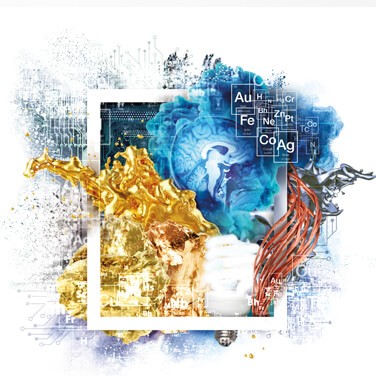Rare Earth Metals: Exploring More Sustainable Supply Chains
From consumer electronics to the next generation of clean energy solutions, rare earth metals are needed for a wide range of technologies and applications. Although they help fuel sustainable initiatives, sourcing these elements has had a significant environmental cost. As the demand continues to increase, many industries are looking for eco-friendly and socially-responsible ways to obtain them.
The Growing Importance of Rare Earth Metals
Rare earth metals are a group of 17 chemically similar elements, including the 15 lanthanides (lanthanum, cerium, praseodymium, neodymium, promethium, samarium, europium, gadolinium, terbium, dysprosium, holmium, erbium, thulium, ytterbium, and lutetium), plus scandium and yttrium. They are highly prized for their unique optoelectronic, magnetic, chemical, and structural properties, and play an essential role in the technological transformation of many industries.
Take your smartphone, for example. The vivid red, green and blue colors on its display wouldn’t exist without europium, terbium and yttrium. Its speakers and microphone likely contain small, yet powerful magnets made from neodymium, while its tiny camera lens may use lanthanum.
In addition to consumer electronics, rare earth metals, alloys and compounds are essential to technologies like MRI scanners, which use gadolinium to improve the visibility of images and neodymium and praseodymium in the machine’s magnets.
Some rare earth metals are also valued for their catalytic applications. For example, cerium, lanthanum and yttrium can be found in your car’s catalytic converter that regulates the vehicle’s emissions. They’re also used in petroleum refining, chemical synthesis, waste water treatment, and in other industrial processes.
The hybrid electric vehicle (HEV) industry relies heavily on these elements as well, using neodymium, terbium and dysprosium in highly-efficient electric motors, and lanthanum and cerium in nickel metal hydride batteries. Cerium serves a second purpose, helping to polish the materials found in windscreen glass and wing mirrors.
Aside from the above applications, rare earth metals are used to produce the lightweight materials found in fuel-efficient aircraft, the permanent magnets in wind turbine motors and the optoelectronics in energy-efficient lighting.
Finding and Extracting Rare Earth Metals
Despite their name, rare earth metals aren’t actually that uncommon. Cerium, for example, is the 25th most abundant of the 78 elements most commonly found in the Earth’s crust. But because these metals have similar geochemical characteristics, they tend to form together in nature, making it a challenge to locate concentrations worth the cost of extraction.
Isolating rare earth metals from ores requires intensive extraction and purification processes. Though new, more environmentally friendly methods are in development, the traditional method of extraction involves repeatedly dissolving the ores in acids, ultimately producing large quantities of hard-to-recycle chemical waste.
Now, a new acid digestion process is able to selectively leach rare earth metals from coal fly ash. The chemicals used in this process are almost entirely recycled, providing an eco-friendly solution that reduces costs, excludes key contaminants and produces high-quality metals and other co-products.
An Environmentally Responsible Route
Thermo Fisher Scientific recently established a partnership with Rare Earth Salts (RES), a United States-based company. The patented RES technology allows for separation and purification of rare earth metals in an environmentally-friendly way, offering significant improvements over other extraction methods. It has been proven at a commercial scale and can be used with most rare earth concentrates.
This collaboration will help the Alfa Aesar brand obtain new best-in-class rare earth metal oxides produced using industry-leading methods for cleaner separation and purification. The oxides produced consistently meet or exceed desired specifications, setting the process apart from that of existing technologies.
“Increasingly, our customers are demanding high-performance yet socially-responsible rare earth metals,” says James Lovgren, Director of Product Management at Thermo Fisher Scientific. “The separation and purification methods used in the production of our new range are amongst the most environmentally benign routes to compounds of these vital elements.”
Initially, five new rare earth oxide products (lanthanum, neodymium, praseodymium, yttrium and europium) will be added to the existing Alfa Aesar™ portfolio and the product line will continue to expand to include more oxides through 2019.
The Future of the Industry
As the importance of rare earth metals continues to increase, many companies recognize the need to acquire them in environmentally and socially responsible ways. The commercial partnership with Rare Earth Salts will be expanding the Alfa Aesar range with premium and environmentally sustainable rare earth metal oxides, offering laboratories a reliable source for these critical materials.

